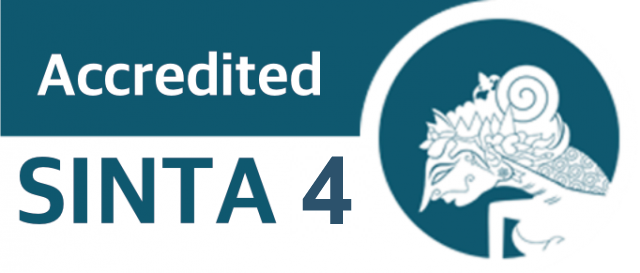Analysis of Learning Motivation of Junior High School Students in Science Learning in Surabaya City
DOI:
10.29303/jpm.v20i2.8644Published:
2025-03-29Issue:
Vol. 20 No. 2 (2025)Keywords:
ARCS; Attention; Confidence Learning; Motivation; Relevance; Satisfaction; Science LearningArticles
Downloads
How to Cite
Downloads
Metrics
Abstract
Student learning motivation is an important factor that influences the success of the learning process. This study aims to analyze the learning motivation of junior high school students in Surabaya City, especially in science learning, without the intervention of a particular learning model or approach. This research design uses a survey design with quantitative data collection methods. The learning motivation instrument is a learning motivation questionnaire containing 12 statements based on ARCS indicators: attention, relevance, confidence, and satisfaction. The sample of this study consisted of 88 students, 32 female students and 56 male students, and the sampling technique used was cluster sampling. The data obtained were analyzed descriptively quantitatively using a Likert scale to determine the average of each indicator of student learning motivation. The results showed that the average student learning motivation reached 71% and was classified in the high category, indicating that students have a fairly good learning motivation in science learning. Therefore, it can be concluded that this research indicates that students' overall learning motivation is on the good criteria. Unfortunately, good criteria did not occur in all indicators, where the confidence indicator showed the lowest score, so there is a need to improve the confidence aspect of students so that they are more active and confident in the learning process, such as using student-centered learning models.
References
R. M. Fransiska, I. H. Wiranata, and N. Nursalim, “Penerapan merdeka belajar dalam menumbuhkan minat dan bakat siswa di SDN 1 Pisang,” in Proc. Semin. Nas. Kesehatan, Sains dan Pembelajaran, vol. 2, no. 1, pp. 158–162, 2022. [Online]. Available: https://proceeding.unpkediri.ac.id/index.php/seinkesjar/article/view/3012
L. Tasiya, “Peningkatan hasil belajar siswa melalui penerapan model pembelajaran numbered head together pada mata pelajaran akidah akhlak di kelas V MI Al-Hamidiyah NW Sidemen Tahun Pelajaran 2019/2020,” Doctoral dissertation, UIN Mataram, 2019. [Online]. Available: https://etheses.uinmataram.ac.id/2342/
Z. Sidik and A. Sobandi, “Upaya meningkatkan motivasi belajar siswa melalui kemampuan komunikasi interpersonal guru,” J. Pendidik. Manaj. Perkantoran, vol. 3, no. 2, pp. 190–198, 2018. [Online]. Available: https://doi.org/10.17509/jpm.v3i2.11764
A. D. Saputra and S. N. Hidayati, “Penggunaan poster infografis pada pembelajaran IPA materi sistem pernapasan untuk meningkatkan hasil belajar siswa SMP kelas VIII,” PENSA: E-J. Pendidik. Sains, vol. 11, no. 3, pp. 208–213, 2023. [Online]. Available: https://ejournal.unesa.ac.id/index.php/pensa/article/view/55158
E. Zuleni and R. Marfilinda, “Pengaruh motivasi terhadap pemahaman konsep ilmu pengetahuan alam siswa,” Educativo: J. Pendidik., vol. 1, no. 1, pp. 244–250, 2022. [Online]. Available: https://doi.org/10.56248/educativo.v1i1.34
N. C. Amelia, Z. Zulhelmi, D. Syaflita, and Y. Siswanti, “Analisis motivasi belajar peserta didik melalui penerapan model pembelajaran POE berbantuan game edukasi berbasis aplikasi Educandy di SMPN 25 Pekanbaru,” DIFFRACTION: J. Phys. Educ. Appl. Phys., vol. 3, no. 2, pp. 56–61, 2021. [Online]. Available: https://doi.org/10.37058/diffraction.v3i2.4145
N. D. Setiyorini, “Pembelajaran kontekstual IPA melalui outdoor learning di SD Alam Ar-Ridho Semarang,” Al-Mudarris: J. Educ., vol. 1, no. 1, pp. 30–38, 2018. [Online]. Available: https://doi.org/10.32478/al-mudarris.v1i1.97
W. N. Sari et al., “Penerapan video pembelajaran IPA dalam meningkatkan motivasi belajar siswa pada pembelajaran online kelas V SDN Pulorejo 02,” JIIP-J. Ilm. Ilmu Pendidik., vol. 5, no. 8, pp. 2795–2800, 2022. [Online]. Available: https://doi.org/10.54371/jiip.v5i8.744
R. Riyanti, “Peran guru bimbingan dan konseling dalam meningkatkan motivasi belajar peserta didik kelas VII MTS Masyariqul Anwar Bandar Lampung Tahun Pelajaran 2018/2019,” Doctoral dissertation, UIN Raden Intan Lampung, 2019. [Online]. Available: https://repository.radenintan.ac.id/7225/
Z. Almahasees, K. Mohsen, and M. O. Amin, “Faculty’s and students’ perceptions of online learning during COVID-19,” Front. Educ., vol. 6, p. 638470, May 2021. [Online]. Available: https://doi.org/10.3389/feduc.2021.638470
A. Heyder, A. F. Weidinger, A. Cimpian, and R. Steinmayr, “Teachers’ belief that math requires innate ability predicts lower intrinsic motivation among low-achieving students,” Learn. Instr., vol. 65, p. 101220, 2020. [Online]. Available: https://doi.org/10.1016/j.learninstruc.2019.101220
A. A. Rohman and S. Karimah, “Faktor-faktor yang mempengaruhi rendahnya motivasi belajar siswa kelas XI,” J. At-Taqaddum, vol. 10, no. 1, pp. 95–108, 2018. [Online]. Available: https://doi.org/10.21580/at.v10i1.2651
A. L. Edu, M. Saiman, and I. Nasar, “Guru dan motivasi belajar siswa sekolah dasar,” J. Literasi Pendidik. Dasar, vol. 2, no. 2, pp. 26–30, 2021. [Online]. Available: http://jurnal.unikastpaulus.ac.id/index.php/jlpd/article/view/2037
G. Prananda and H. Hadiyanto, “Korelasi antara motivasi belajar dengan hasil belajar siswa dalam pembelajaran IPA di sekolah dasar,” J. Basicedu, vol. 3, no. 3, p. 450107, 2019. [Online]. Available: https://jbasic.org/index.php/basicedu/article/view/181
U. Salmia, “Pengaruh ability grouping terhadap motivasi belajar matematika siswa di SMPN 1 Sragi,” Doctoral dissertation, UIN KH Abdurrahman Wahid Pekalongan, 2024. [Online]. Available: http://etheses.uingusdur.ac.id/7638/1/2620075_Cover_Bab%20I%20dan%20Bab%20V.pdf
W. R. Syachtiyani and N. Trisnawati, “Analisis motivasi belajar dan hasil belajar siswa di masa pandemi COVID-19,” Prima Magistra: J. Ilm. Kependidik., vol. 2, no. 1, pp. 90–101, 2021. [Online]. Available: https://doi.org/10.37478/jpm.v2i1.878
S. M. Dewi, A. Harjono, and G. Gunawan, “Pengaruh model pembelajaran berbasis masalah berbantuan simulasi virtual terhadap penguasaan konsep dan kreativitas fisika siswa SMAN 2 Mataram,” J. Pendidik. Fis. Teknol., vol. 2, no. 3, pp. 123–128, 2016. [Online]. Available: https://doi.org/10.29303/jpft.v2i3.302
A. Asiyah, A. Walid, and R. G. T. Kusumah, “Pengaruh rasa percaya diri terhadap motivasi berprestasi siswa pada mata pelajaran IPA,” Scholaria: J. Pendidik. Kebudayaan, vol. 9, no. 3, pp. 217–226, 2019. [Online]. Available: https://doi.org/10.24246/j.js.2019.v9.i3.p217-226
S. Amri, “Pengaruh kepercayaan diri (self confidence) berbasis ekstrakurikuler pramuka terhadap prestasi belajar matematika siswa SMA Negeri 6 Kota Bengkulu,” J. Pendidik. Matematika Raflesia, vol. 3, no. 2, pp. 156–170, 2018. [Online]. Available: https://ejournal.unib.ac.id/index.php/jpmr/article/view/7520
R. Babullah, S. Qomariyah, N. Neneng, U. Natadireja, and S. Nurafifah, “Kolaborasi metode diskusi kelompok dengan problem solving learning untuk meningkatkan keterampilan pemecahan masalah siswa pada materi aqidah akhlak,” J. Budi Pekerti Agama Islam, vol. 2, no. 2, pp. 65–84, 2024. [Online]. Available: https://doi.org/10.61132/jbpai.v2i2.132
A. K. Wicaksana, A. F. Nisa, and I. Q. Bariyah, “Implementasi media permainan ular tangga dalam pembelajaran IPA di SD pada sistem pernapasan manusia,” Pendas: J. Ilm. Pendidik. Dasar, vol. 9, no. 2, pp. 6287–6295, 2024. [Online]. Available: https://journal.unpas.ac.id/index.php/pendas/article/view/14883
Author Biographies
Martha Damayanti, Science Education Department, Universitas Negeri Surabaya
Siti Nurul Hidayati, Science Education Department, Universitas Negeri Surabaya
License
Copyright (c) 2025 Martha Damayanti, Siti Nurul Hidayati

This work is licensed under a Creative Commons Attribution 4.0 International License.
The following terms apply to authors who publish in this journal:
1. Authors retain copyright and grant the journal first publication rights, with the work simultaneously licensed under a Creative Commons Attribution License 4.0 International License (CC-BY License) that allows others to share the work with an acknowledgment of the work's authorship and first publication in this journal.
2. Authors may enter into separate, additional contractual arrangements for the non-exclusive distribution of the journal's published version of the work (e.g., posting it to an institutional repository or publishing it in a book), acknowledging its initial publication in this journal.
3. Before and during the submission process, authors are permitted and encouraged to post their work online (e.g., in institutional repositories or on their website), as this can lead to productive exchanges as well as earlier and greater citation of published work (See The Effect of Open Access).











